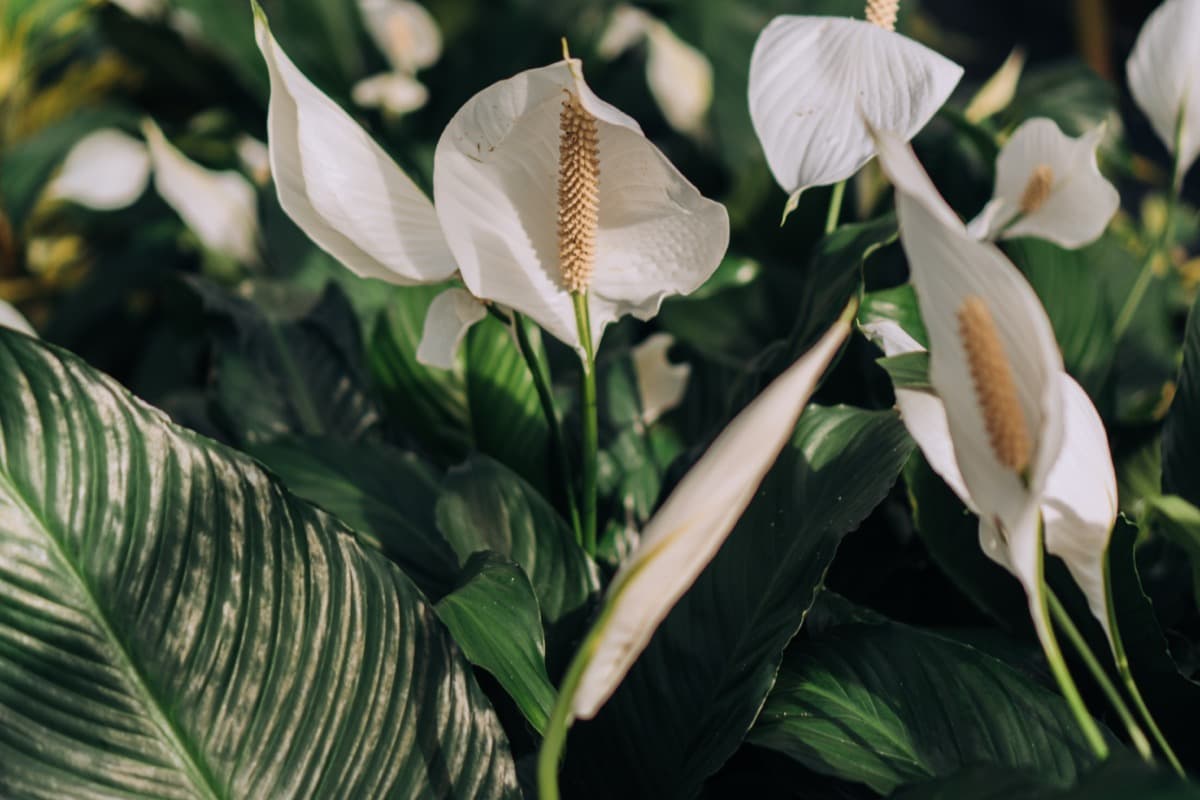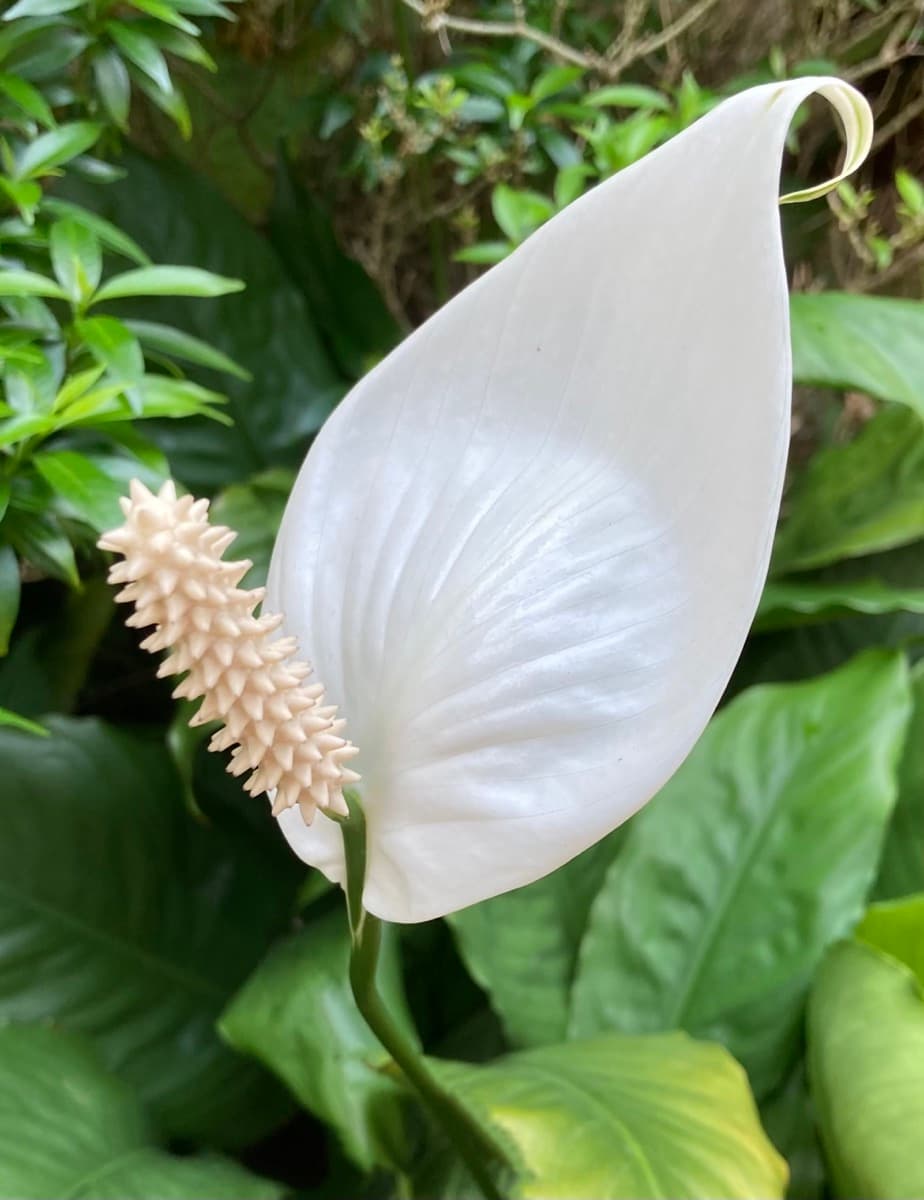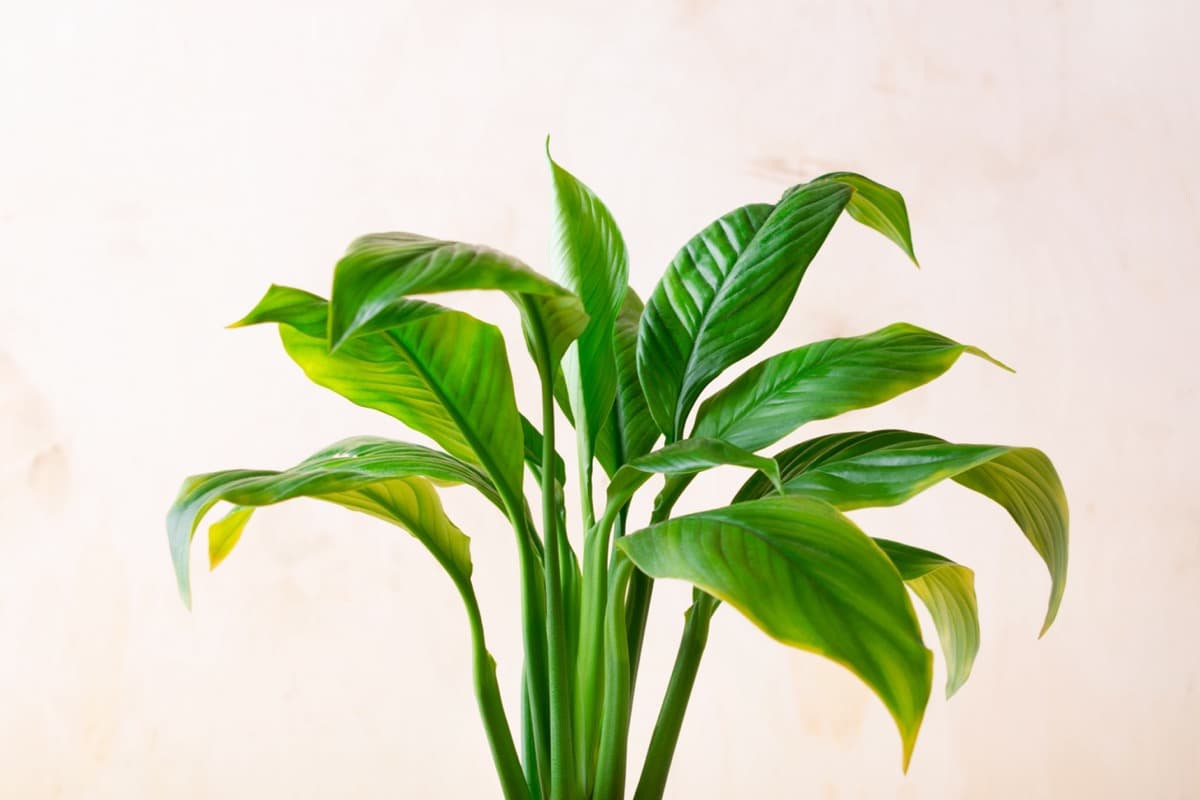Peace lilies, rich green leaves, and brilliant white flowers are a beloved addition to many indoor gardens, known for their elegance and resilience. Despite their hardiness, peace lilies can encounter various issues that may compromise their health and vitality. A peace lily plant may display signs of distress, from yellowing leaves, brown spots, root rot, pest infestations, and more. Understanding these common problems and their solutions will help your peace lily thrive, keeping its charm and beauty intact.

10 Common Problems With Peace Lily Plants
Yellow Leaves on Peace Lily Plant
One of the first signs of trouble in a peace lily plant is the yellowing of leaves. This yellowing often signifies overwatering. Excess water blocks the plant’s pores, causing the leaves to turn yellow and wilt. Sometimes, it may also hint at an overly bright environment. Peace lilies enjoy lower light conditions; direct sunlight can lead to yellow leaves.
What is eating my peace lily leaves, you may wonder? You’ll be relieved to know that, in most cases, it’s not an insect problem. The solution to yellow leaves involves reducing the water given and moving the plant to a shadier location. If your peace lily leaves turn brown and yellow, it’s most likely due to overwatering, under-watering, or exposure to a draft.
Wilting Peace Lily Plant Leaves
Wilting leaves can indicate a couple of issues. Underwatering can cause the plant to dehydrate, making the leaves wilt. On the other hand, overwatering can lead to root rot, resulting in wilting. A quick plant inspection can reveal which of the two is the cause. Dry, crumbly soil indicates underwatering, while soggy, smelly soil points towards overwatering. Adjust the watering schedule accordingly, ensuring the soil is moist but not waterlogged.
Peace Lily Not Flowering
One common concern among peace lily owners is the lack of blooms. In most cases, the problem is inadequate light exposure or an unbalanced fertilizer. Peace lilies require indirect light to produce their signature white blooms. Additionally, a fertilizer high in nitrogen promotes leaf growth at the expense of blossoms. Switching to a balanced, slow-release fertilizer can encourage flowering. Ensuring your peace lily receives the right balance of light and nutrients will promote lush growth and plentiful flowers.
Brown Spots on Peace Lily Leaves
Brown spots on peace lily leaves are usually a sign of fungal or bacterial infections, often due to overwatering. The condition may be severe if the brown spots are on the tips of the leaves or on the flower itself. For a peace lily fungus treatment, removing the affected leaves, adjusting watering practices, and applying a suitable fungicide are recommended. To prevent fungus spread, don’t water overhead.
Peace Lily Drooping Stems
Drooping stems in a peace lily are often a sign of water stress. This can result from either overwatering or underwatering. The plant’s soil should be kept consistently moist but not soggy. A thorough watering when the top inch of the soil is dry to the touch should prevent this issue. In case of overwatering, hold back on water until the soil dries out, and make sure the pot has good drainage to prevent water from stagnating.
Peace Lily Root Rot
Root rot is a serious problem for peace lilies, most commonly resulting from overwatering. Root rot can be identified by drooping leaves, discolored foliage, and a bad odor emanating from the soil. You may notice a foul smell when you remove the plant from the pot; this indicates root rot. Removing all the affected roots and treating the healthy ones with a fungicide before repotting the peace lily in fresh, well-draining soil is crucial. Cutting back on watering and ensuring proper drainage will also help prevent this problem.
In case you missed it: How to Grow and Care for Spider Lily: Planting Instructions

Peace Lily Pests and Insects
Peace lilies are generally resistant to pests, but certain insects such as mealybugs, aphids, and spider mites may infest them. These pests are small but can cause significant damage to the peace lily, resulting in issues like wilting and yellowing leaves. It is key to keep an eye out for these pests and eliminate them as soon as they’re spotted. You can treat pests with insecticidal soaps or neem oil. Deter pests by regularly wiping leaves with a damp cloth.
Peace Lily Leaves Turning Black
Peace lily leaves turning black can be alarming. This is often an indication of a severe disease or watering issue. Excessive watering can result in root decay, ultimately causing leaves to turn black. On the other hand, cold drafts can also cause the leaves to blacken. In such a case, relocating the plant to a warmer spot away from cold drafts can help. If overwatering is the cause, you’ll need to address the root rot, as discussed earlier.
Peace Lily Soil Mold or Fungus
White mould on piece lily soil is a common sign of fungal growth, usually due to overwatering or poor ventilation. It may not directly harm the plant but indicates conditions that can lead to serious problems like root rot. To treat this, scrape off the visible mold, dry the soil, and decrease the watering frequency. You may also need to replace the top layer of the soil if the mold persists. Using a fungicide can help treat the mold and prevent future growth.
Peace Lily Not Growing New Leaves
The peace lily not growing new leaves may be due to several factors. It could result from insufficient light, nutrient deficiency, or the plant being root-bound. Ensure your peace lily is placed where it can receive bright, indirect light. Feed it with a balanced, slow-release fertilizer during the growing season. When the plant’s roots fill the entire pot, indicating root-binding, it’s necessary to transfer the peace lily to a bigger pot and use new soil.
In case you missed it: The Best Fertilizer for Lillies: When and How to Apply

Conclusion
Peace lilies are an excellent choice for an indoor plant, providing beauty and elegance. However, as with all plants, they can encounter various problems. By recognizing and understanding these issues, you can respond effectively and ensure your peace lily remains a healthy and vibrant part of your indoor garden. Regular checks, appropriate watering, lighting, feeding, and prompt pest and disease control, will keep your peace lily flourishing. Maintaining composure and staying dedicated are crucial factors in effectively nurturing plants.
- Ultimate Guide to Ossabaw Island Hog: Breeding, Raising, Diet, and Care
- Ultimate Guide to Juliana Pig: Raising Facts, Size, Diet, Care, and Lifespan
- Raising Lleyn Sheep: Disadvantages, Price, Uses, Characteristics, and Care
- Ultimate Guide to Meishan Pig: Breed Facts, Breeding, Raising, and Care
- Ultimate Guide to Teacup Pigs: Raising, Diet, Lifespan, Cost, and Care
- Guide to Raising Poll Dorset Sheep: Facts, Profile, Characteristics, Uses, and Care
- Ultimate Guide to Bighorn Sheep: Characteristics, Diet, Lifespan, Breeding, and Lifecycle
- Ultimate Guide to Raising Katahdin Sheep: Farming Facts, Breed Profile, Uses, and Care
- Ultimate Guide to Raising Oreo Cows: Belted Galloways Farming Facts, Profile, Uses, and Care